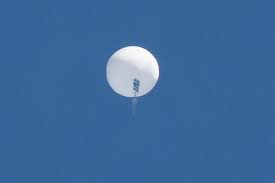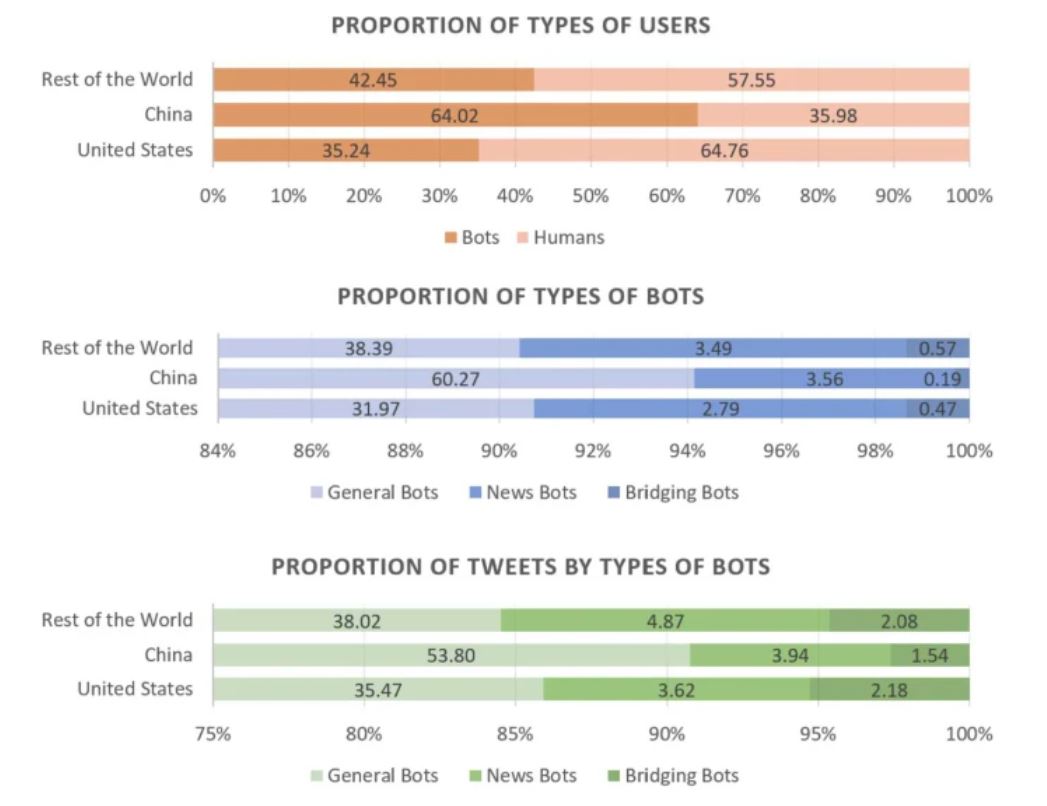
Bots in the US-China Balloon Discourse
By Lynnette Ng
Image caption: The Chinese spy balloon that floated over Canada and the US in 2023 shortly before it was shot down over South Carolina
Image credit: Joe Granita/ZUMA Press Wire/Shutterstock
This research was featured in the New Scientist article by Chris Stokel-Walker entitled, "Armies of bots battled on Twitter over Chinese spy balloon incident". Read the full article here or on Reddit - February 2024
Recent Publication:
Citation: Ng, L. H. X., & Carley, K. M. (2023). Deflating the Chinese balloon: types of Twitter bots in US-China balloon incident. EPJ Data Science, 12(1), 1-28 https://link.springer.com/article/10.1140/epjds/s13688-023-00440-3
The US-China Balloon Incident
In early 2023, a balloon believed to have originated from China is spotted across the US airspace. Both countries had opinions on the function and eventual handling of the balloon. The US thought that it was a surveillance balloon, while China maintained that is was a weather balloon. The balloon was eventually shot down by a fighter jet by the US. This incident sparked much discourse on social media, between users that affiliate with both countries. We specifically examined bot activity within the US-China discourse. This includes studying the types of bots used and the information maneuvers used. We collect data from Twitter surrounding the US-China discourse, and we identify the affiliated geolocation of the bot through their indicated coordinates or a reverse geocoding of their location string provided in their account biography.
Bots in the Balloon Incident on Twitter
Bots are an important part of conversations involving countries because past studies have observed that they participate actively in political discourse on social media. Bots associated with Russia have been observed to employ tactics to sow discord and support specific candidates. In 2022, bots were deployed by both Russia and Ukraine to manufacture support and conflict regarding the war between the two countries. In our article, we studied three types of bots in the US-China balloon discourse:
original news or aggregating news accounts. These bots are identified in two ways: (1) substring matching by identifying the presence of a substring “news” in their names or description; or (2) a machine learning approach where news bots are determined by more than 90% of the bot’s tweets being classified as news headlines.
3. Bridging Bots: bot accounts that build a communication pathway between two
clusters of users These bots are identified using a network analysis approach. They are bots that straddle between two Louvain communities within an all communication network.
In our study we find that there is a higher proportion of bot users (42% to 64%) within the balloon discourse as compared to general discussion. In general discussion, bots are estimated to be about 20% of the users in the discussion. General bots have the highest percentage within the discourse. They are segregated into two main clusters, US-affiliated and China-affiliated. This reflects the idea of homophily, where similarity breeds connection. News bots are dispersed throughout the social network, demonstrating their activity in dispensing news to a variety of user types in social media space. Bridging bots are rarer throughout the network, mostly because they contradict the principle of homophily by straddling between two communities.
In terms of topics of discussions, bots geotagged from the US are generally concerned with the spatial location of the balloon and the possibility of it being a surveillance balloon. Bridging bots from the US discuss themes that directly relate political topics to the incident. Bots geotagged from China discussed topics about war, sanctions, cyber warfare and communism. These topics do not directly describe the incident, but reflects that Chinese bots view the actions of the US as a sign of aggression.

CAPTION: User type distribution through social network graph. Original figure from paper by authors
Bots and Information Dissemination Strategies
We use the BEND framework to identify information dissemination strategies. In this study, we focus on positive maneuvers, or diplomacy enhancing endeavors, for nations typically attempt to portray a good image to soften their brand name. Therefore, we focus on the B- and E- maneuvers. We observe that General Bots perform the most Back maneuvers, Bridging Bots perform the most Build maneuvers, and News Bots perform the most Bridge maneuvers. For the Emaneuvers, General Bots perform the most Engage and Explain maneuvers, Bridging Bots performed the most Enhance maneuver and News Bots performed the most Excite maneuvers.
In summary,
1. All three types of bots are present across the affiliation to two countries (General,
News, Bridging Bots).
2. Bots geotagged to the US are generally concerned with the balloon location, while those geotagged to China discussed topics related to escalating tensions.
3. Bots geotagged to each country performed different extent of positive narrative and network maneuvers.
4. We are unable to definitively say whether the bots do indeed origin from each of thecountries. We can only infer from the location the bots present on social media,
which may not be their true location. However, their presentation of the location
indicates the affiliation to which the bot is identified with.
